Fairburn Tower was a roofless gutted shell when Landmark took it on. Yet it was clear from the level of detail surviving in its crumbling masonry that the tower had once been the scene of a rich existence.
The walls on the upper floors especially were honeycombed with alcoves and aumbreys (or wall cupboards). We knew Fairburn Tower’s builder, Murdo Mackenzie, experienced the latest Renaissance fashions first hand in James V’s royal palaces, since he served a Groom to the King’s Bedchamber - until the king granted him his own lands to build upon in 1542. We set out to to capture a flavour of 16th-century Scotland in Fairburn Tower’s interiors.
Unlike in England at the time, Scottish walls were generally left unpainted, covered instead by wall hangings.
Instead, a distinctive feature of the Renaissance period in Scotland was a fashion for painted ceilings, turning plain timber joists and floorboards into a riot of colour and meaning. Various examples of these painted ceilings survive and we decided to recreate such a ceiling on the second floor at Fairburn Tower, formerly the main room of this laird’s dwelling.
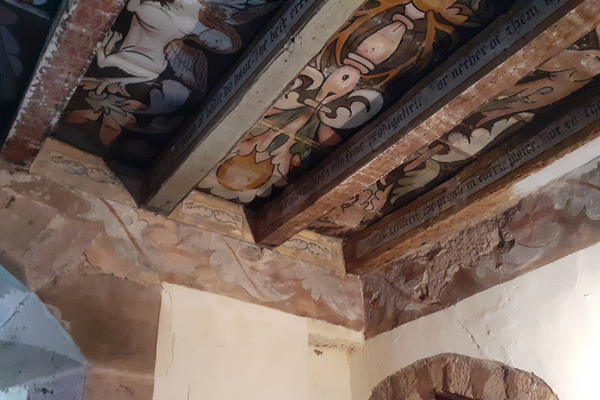 Detail of the ceiling in the Rohaise Room at Delgatie Castle
Detail of the ceiling in the Rohaise Room at Delgatie Castle
We took as our reference the Rohaise Room at Delgatie Castle (its core built in the 1570s), 100 miles east of Fairburn. Delgatie is believed to be one of a group of castles built by the same master mason of similar size and status to Fairburn, reinforcing its relevance to us.
The Delgatie ceiling is dated 1597 and is initialled JM, thought to be John Melville of Aberdeen, a painter active in the region at the time. There is a recognised ‘Aberdeen style’ to joinery in the period; it is likely that the same would be true for the ceiling painters, and we were keen to root our design to a style closer to the Highlands than other surviving ceilings in the Lothians.
The 16th-century painters based their ceiling schemes on printed pattern books that circulated widely at the time. The visual imagery drew on the Italian fashion for grotesque work after the discovery of ancient Roman frescoes, and the French fashion for emblems, motifs that capture a proverb or cautionary tale in a single emblem. In Scotland, cautionary sayings were often painted along the downstands of the joists, typically in Old Scots.
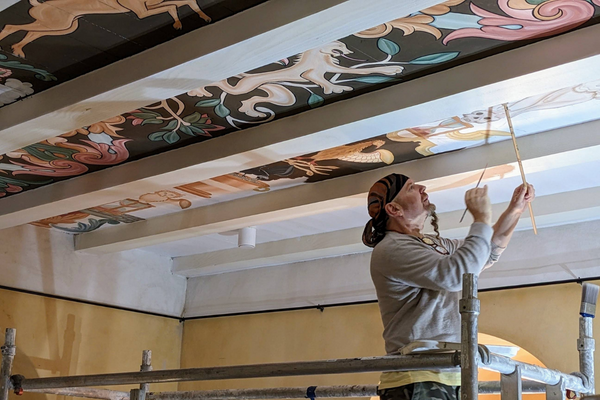 Paul Mowbray at work on the painted ceiling at Fairburn Tower.
Paul Mowbray at work on the painted ceiling at Fairburn Tower.
Fortunately for us, modern day artisan painter Paul Mowbray is well-versed in the language of these riotous ceilings. At Fairburn I’ve worked closely with Paul as we followed his fellow 16th-century painters in consulting not just the Delgatie ceiling but also the same pattern books, chiefly Claude Paradin’s Devises Herioques (1551+) and Geoffrey Whitney's A Choice of Emblemes (1586).
There is much from Delgatie that will be recognisable in the Fairburn ceiling, but we have also made sure that it is personalised to Fairburn Tower. Murdo’s initials and the stag’s head from the Mackenzie coat of arms feature prominently. A rampant stag beneath a crown and a banner reading ‘Caesar hoc me donavit’ (‘The King gave me this’) comes direct from Paradin and marks James V’s Crown grant of the Fairburn lands to Murdo.
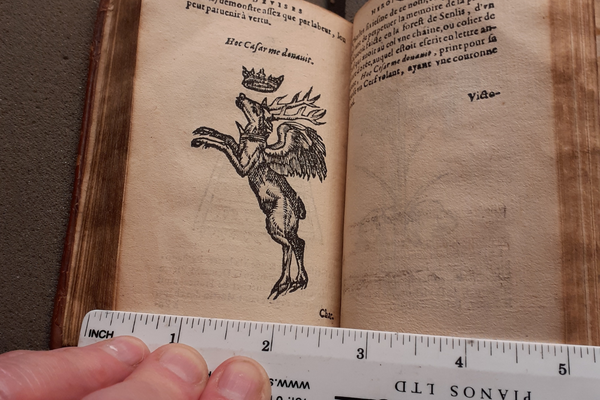 ‘The King gave me this’ - an emblem from Claude Paradin’s ‘Devises Heroïques’ (1571)
‘The King gave me this’ - an emblem from Claude Paradin’s ‘Devises Heroïques’ (1571)
There is also a Landmark panel run, where you will find Fame with her trumpets conquering Time (Whitney), and also a devise of Paul’s own invention to symbolise the Fairburn project: an owl above an hourglass sitting on cobbles. The owl represents wisdom but also the delays caused to the project by roosting owls, and our archaeologist’s unexpected discovery that 16th-century cobbles survived around the tower.
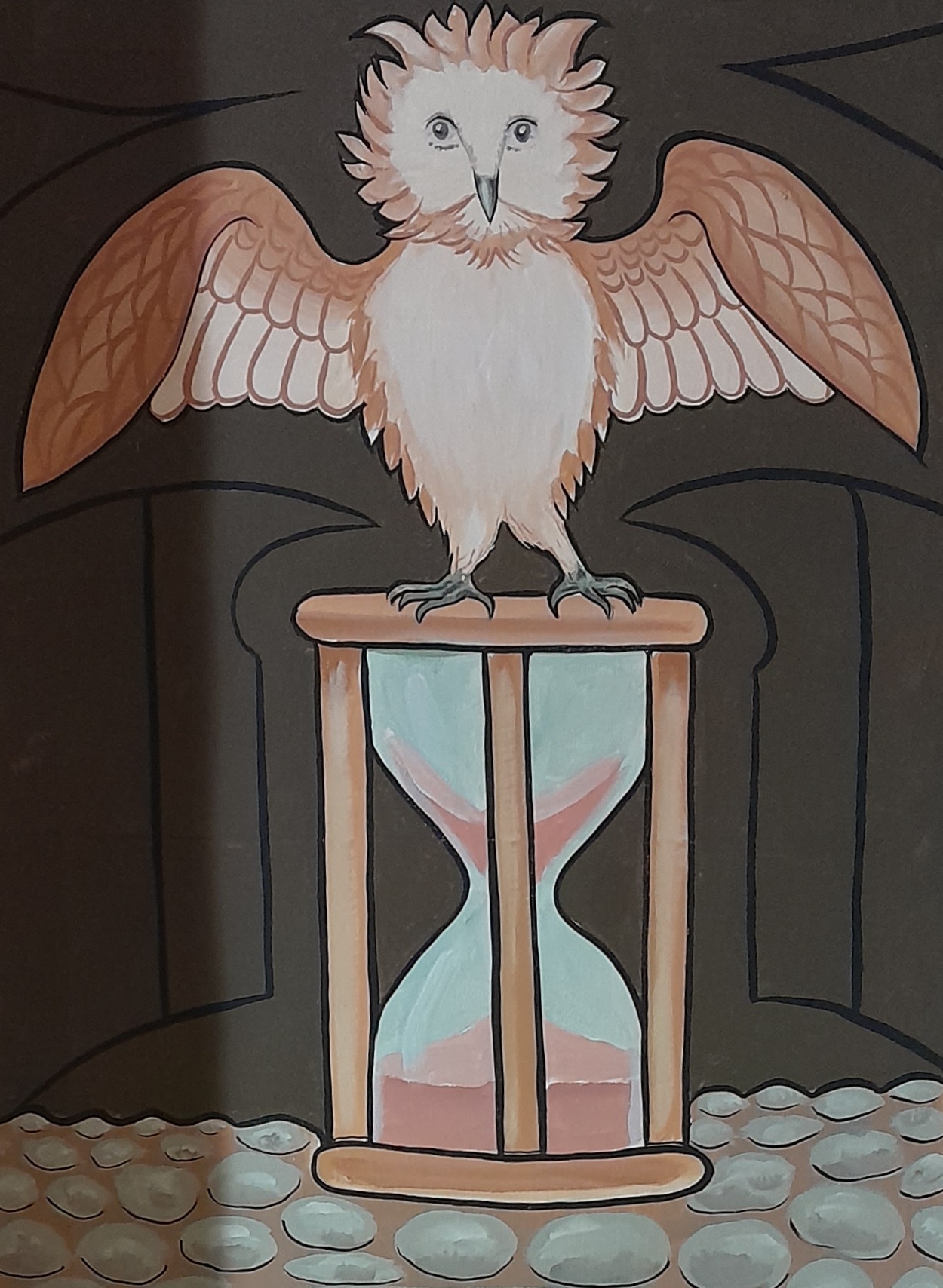 One of the emblems on the ceiling representing Landmark’s restoration.
One of the emblems on the ceiling representing Landmark’s restoration.
Look closely at a sun for a subtle self-portrait of Paul himself, in the best tradition of Renaissance artists. The face of the accompanying moon, says Paul, ‘is a mystery.’ For those staying at Fairburn Tower, we hope there will be hours of fun in decoding the imagery and deciphering the Old Scots sayings, ’For quhy it is a far better thing to have freindis than to be a king’.
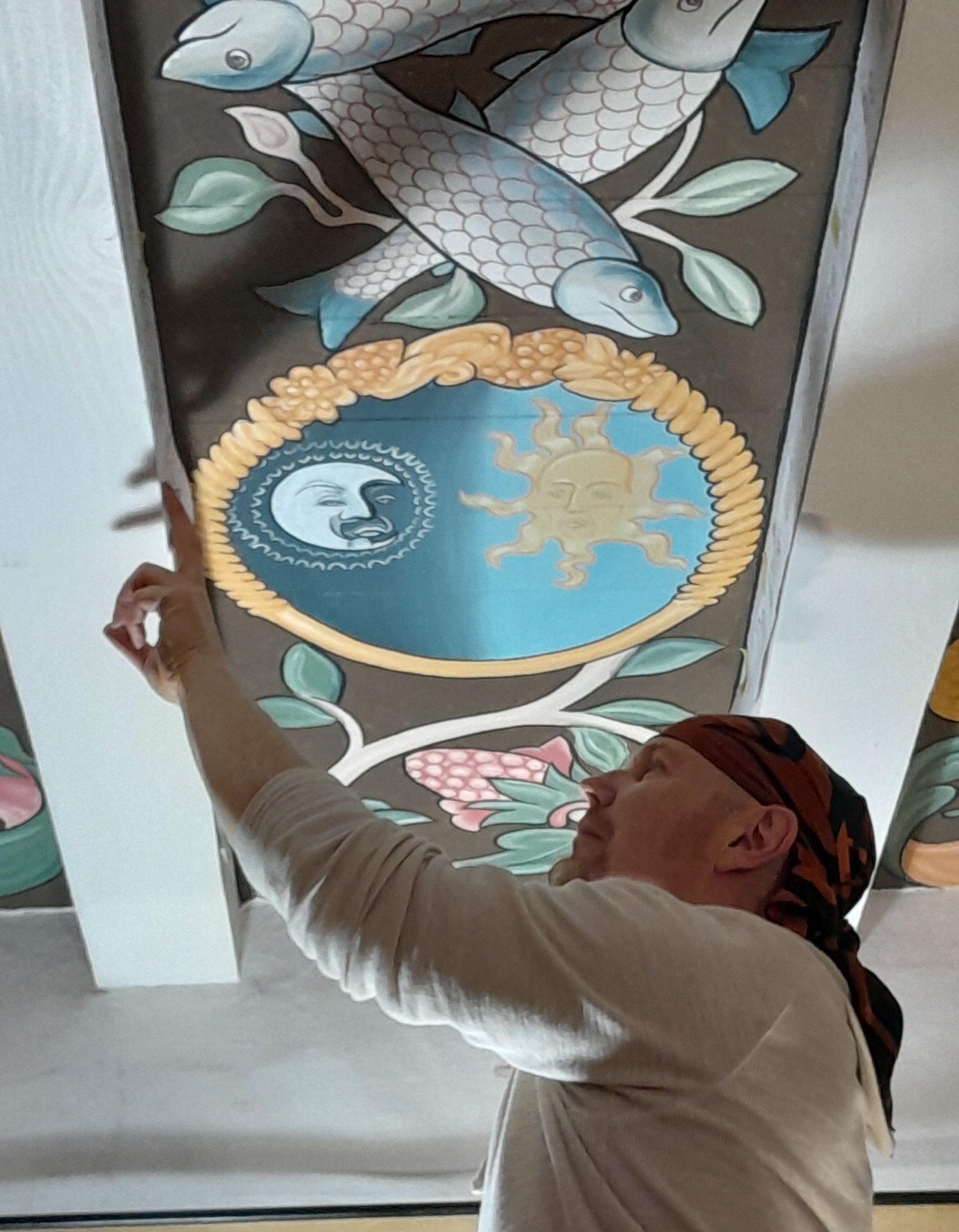 Look closely at the sun…
Look closely at the sun…
October 2022